What better topic for a one off post than a roundup of Norway’s crowning achievements over the past ten years. This has undoubtedly been the most important and successful period for new Norwegian musical successes on the world stage, with the small nation not just holding it’s own but positively leading the pack in a number of contemporary genres and scenes. As 2010 rolls into place, here are the top 25 Norwegian albums from 2000 to 2009:
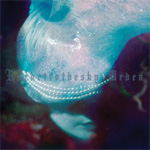 1. Rockettothesky
1. Rockettothesky
Medea
(2008)
Rockettothesky’s startling album owes an audible debt to Vespertine; all twinkling, fleeting arrangements and meandering vocals that seep and eddy, but whilst that Björk record was a warm celebration of sexual love as a force of unification with nature, Medea is a psychologically frightening exploration of feminine mystery and medieval morbidity. Twenty-first century problems are transposed onto a mythological canvas; school shootings intermingled with ‘sea-nymphs’, sex primal and destructive, each song circled by or submerged in the concealing and eroding darkness of the immutable forces of the waters of mortality – a female counterpart to Eliot’s The Waste Land. But where Vespertine ended up sounding too slight, too twinkly, too meandering, Medea is jagged, shadowy, poetic, simultaneously appealing and appalling, and at times even wonderfully catchy. Rockettothesky has crafted an album that is always interesting, consistently challenging, and frequently nothing short of breathtaking.
2. Kings of Convenience
Quiet Is The New Loud
(2001)
Two gangly young men strummed acoustic guitars and sung hushed harmonies as they smiled into one another’s pale faces like bashful but radiant lovers, telling at first a few but then hundreds of thousands that quiet was the new loud. And when they sang to us we believed it, and for a while it was: a slew of new acoustic artists harnessed Nick Drake and Simon & Garfunkel and spread the KoC message. But when the dust had settled and the hype subsided all we were left with was this record, the finest of its kind from any country this decade. From the dark noir harmonies of ‘The Passenger’ and ‘Leaning Against The Wall’, through the lilting warmth of ‘I Don’t Know What I Can Save You From’, to the heartbreaking whispered second half of ‘Summer On The Westhill’ – every tenderly plucked string a touching gift to the listener – the simplicity, tenderness, honesty and precision of the duo’s debut make this the crowning achievement of unlikely royalty.
3. Röyksopp
Melody A.M.
(2001)
What is there to say? If you know one thing about this decade in Norwegian music then this is surely it. Röyksopp achieved colossal success with their celebrated debut, and entirely on their own terms. There was the swishing chillout of opener ‘So Easy’, the muted Balearic strains of ‘Poor Leno’, the smooth future-jazz of ‘She’s So’; none of it jumped on a bandwagon or strutted with scenesters. But if one cut defined this record it was the iconic organic bursts and bleeps of ‘Eple’, the only track with a Norwegian title catapulting the duo to ubiquity in the English-speaking world so that now, perhaps unwittingly, millions of people know the Norwegian word for ‘apple’. Nearly a decade on, Melody A.M. remains the benchmark for downtempo.
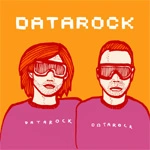 4. Datarock
4. Datarock
Datarock Datarock
(2005)
This is a silly album. The lyrics are adolescent and stuffed to the colon with double entendres, the vocals are hammed-up, the instruments are rudimentary and sound it, and the references are geeky and heavy-handed; in fact, the whole affair verges on parody, and in many ways it was little more than a joke. What? You took all that as a criticism? Far, far from it. This is a wonderful album, for all of the above reasons and more – an album where all eleven songs are brimming with D.I.Y invention, irresistible verve and humour, and wickedly catchy melodies. If you are a fan of jumping-up-and-down-with-a-smile-on-your-face then this album should be your god. And everyone in the fucking world is a fan of jumping-up-and-down-with-a-smile-on-your-face, so bow at the alter of Devo’s natural heirs.
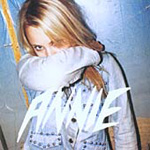 5. Annie
5. Annie
Anniemal
(2004)
A cursory look at the biography of Annie Lilia Berge Strand reveals a life scarred by sobering levels of personal tragedy: the childhood loss of a father and the death of her lover and collaborator just as their careers began to flourish. But even the deepest investigation of Annie’s musical output will fail, perhaps understandably, to discern any of this darkness in the bright bubblegum world. But Annie is right to call her music ‘pop with edges’. This is pop as it should be: sleek, smiling and unforgettable, but full of invention, exploration and absorption. Annie, with the pinball explosion of ‘Chewing Gum’ as her calling card and the soaring club dreamer ‘Hearbeat’ as proof of her musical credentials, rescued pop from its post-nineties grave and showed all the haters just how essential it could be.
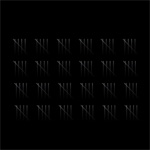 6. 120 Days
6. 120 Days
120 Days
(2006)
From the moment ‘Come Out (Come Down, Fade Out, Be Gone)’ emerges from a turbulent pulsing ether with bursts of jagged industrial synth Oslo four-piece 120 Days ‘ self-titled debut is confirmed as a work of supreme confidence and epic vision. Krautrock guitars morph and crunch, jostling with jagged space-techno swirls, as Bono-esque (in a good way) vocals chant seedy mantras of the modern night through the pulsating mist. Krautrock’s intrinsic repetition is tightened into a taut electro-rock throb, matchless indie melodies crystallising peerless singles out of a cohesive and absorbing album experience, both sonically interesting and melodically memorable.
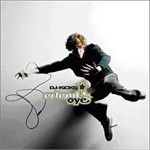 7. Erlend Øye
7. Erlend Øye
DJ-Kicks
(2004)
Every wave needs a poster boy, and for Norway’s surge it was the perhaps unlikely figure of Erlend Øye; his thick-rimmed glasses jutting out from beneath a shock of orange hair atop a gangly frame, his whispered croon adorning the fragile mantras of Kings of Convenience. Curious, then, that his greatest solo achievement should be an electronica mix-tape: the stand-out release in !K7 Records guest-compiled series. But to call Øye’s DJ-Kicks a mere mix-tape does the record a gross disservice. Not only are his choices matchless (from the Jürgen Paape opener that sums-up Kompakt, through Alan Braxe & Fred Falke’s delicious ‘Rubicon’, to probably the filthiest song I’ve ever had the pleasure to hear; Avenue D’s hilarious ‘2d2f’), but his own musical stamp is everywhere, as he mingles his own past tracks with those of others and frequently sings lyrics to disparate songs over his selections, to startling effect. Nowhere is this better evidenced than on the album’s defining moment, a remix of ‘Poor Leno’, a track to which Øye contributed the original vocals, over which he intones lyrics from The Smiths ‘There Is A Light That Never Goes Out’, an untouchable song if ever there was one. He more than gets away with it. Perhaps the ultimate irony is that this mix from a man noted for his soft acoustic stylings is credited by many as a crucial stage in the increasing acceptability of electronic music among the rock community, a startling legacy for one awkward Bergen native.
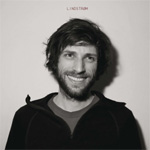 8. Lindstrøm
8. Lindstrøm
Where You Go I Go Too
(2008)
‘I Feel Space’, Hans-Peter Lindstrøm titled the most famous cut off his EP collection It’s A Feedelity Affair. On this debut album proper he doesn’t just ‘feel space’; he positively embodies it – both spatially and cosmically. Lindstrøm has crafted a vibrantly rich and fleshed-out, evolving, musical universe: a patter of twinkly electronics seems to transport us to a distant sheen of stars, a bass fluctuation to wisp us past a supernova, a fleeting synth to guide us through the birth and death of a star; the panting breaths that interrupt the title track suggesting his vision of the cosmos even encompasses the birth of man. Where You Go I Go Too, would perhaps be more fittingly titled ‘Where I Go You Go Too’, such is the sense of being led by its maker on an epic journey – and such is the album’s frequent evolution and fluctuation that it is small moments, rather than songs, that we cherish as listeners: the guttural reverberation 5:28 into the opener, or the shimmering droplets that herald the emergence of ‘The Long Way Home’ from the mist. Lindstrøm’s proggy Italo-Disco may look back in time for its inspirations, but it is taking ‘dance’ music to a profoundly new place.
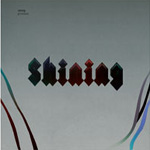 9. Shining
9. Shining
Grindstone
(2007)
Shining started life as a jazz act but as this churning beast of an album confirms, they have increasingly morphed into an oh-so-powerful metal behemoth. Not to say that the complexities and intricacies of their former incarnation have been shed along the way, far from it. Twinkling piano dances with shuddering riffs, soaring saxophone wrestles with pitch black screeches, and quiet and loud take it in turns to provide continual surprises. ‘In The Kingdom of Kitsch You Will Be A Monster’ references The Unbearable Lightness of Being but is a body-slamming beast of a track, whilst the sinister drone of ‘1:4:9’ nods to 2001: A Space Odyssey, but no matter what the literary subtext, the growling, beautiful, complex and satisfying crunch of a band with an enviable surplus of ideas is breathtaking at every turn.
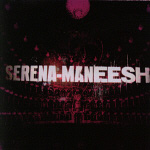 10. Serena Maneesh
10. Serena Maneesh
Serena Maneesh
(2005)
“I’ve always loved tension,” Serena Maneesh frontman Emil Nikolaisen has said of his music, “…I love the constant danger of things falling apart”, and this sums up the immersive experience of listening to the Oslo shoegaze-merchants’ debut long-player. Flurries and screeches of discord and abrasive noise are just heaved back from the brink of disarray by returning melodic riffs that impose temporary order before the musical elements battle against their constraints once more. Some sneered at what they saw as nothing more than unapologetic My Bloody Valentine aping, but there is true organic individuality and imagination to the chaos within structure of Serena Maneesh, the sound of constant shifting and reassembling, the sound of constant musical rebirth.
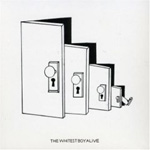 11. The Whitest Boy Alive
11. The Whitest Boy Alive
Dreams
(2006)
The Whitest Boy Alive originally started out as an electronic music project, but soon the mission became to recreate the sounds and effects of electronics on their live instruments. And so Dreams was born, a quiet delight crafted from the minimalist tools of Marcin Öz’s bouncing bass, Sebastian Maschat’s hypnotic percussion, Erlend Øye’s regimented guitar incursions and bursts of wheezy 70’s keyboards courtesy of Daniel Nentwig. But quiet it was. They had rhythm, sure, but each song sounded like they’d taken some bombastic funk-pop number and stripped it of all embellishment, stripped it down to its most basic stems, a minimalist dream-pop skeleton with Øye breathing over the top. And I wouldn’t have it any other way.
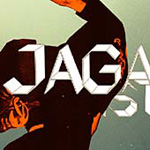 12. Jaga Jazzist
12. Jaga Jazzist
A Livingroom Hush
(2001)
Norway has become something of a hub for experimental jazz, and this collective are right at the heart of that. Soft and vibrant horns sway over jittery percussion to be surprised into unconventionality by bursts of nervy electronics. Nu-jazz found its defining moment in the lilting melodies and their dark machine counterparts on an album that eschewed the kind of easy-listening sounds suggested by its own title.
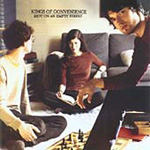 13. Kings Of Convenience
13. Kings Of Convenience
Riot On An Empty Street
(2004)
A small-scale expansion of the musical palette allowed for muted bass and horn incursions and vocal assistance from an on-form Feist on Kings of Convenience’s follow-up album, but the ethos remained the same, and this charming effort offered-up the duo’s two finest songs: the beautiful ‘Sorry Or Please’, and geek anthem ‘I’d Rather Dance With You’.
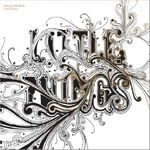 14. Hanne Hukkelberg
14. Hanne Hukkelberg
Little Things
(2004)
Hukkelberg’s wonderful debut is at once accessible in a mainstream Katie Melua kind of way, and also quirky and charming, as her smiling voice – a mixture of idiosyncratic Bjork-esque foetal Scandi-pronunciation and smoky prohibition-era jazz bar femme – embraces a background of plinking xylophones, lightly parping horns, lamenting accordions and weeping saws, as drops of water plip and wash. The atmosphere is one of playful, detailed, delight.
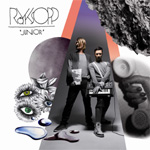 15. Röyksopp
15. Röyksopp
Junior
(2009)
Röyksopp’s long-awaited return is a joyfully cool, satisfying, and fun slice of pop zeitgeist-capturing, featuring three of the finest female vocalists of the moment (and Anneli Drecker).
n
n
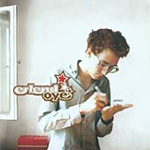 16. Erlend Øye
16. Erlend Øye
Unrest
(2003)
Recorded in ten different cities around the world with ten different electronic producers Unrest is nevertheless dominated by Øye’s trademark sotto voce musings, as gentle round-edged electronics compliment a slew of perfect melodies.
n
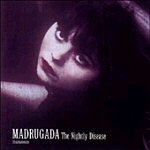 17. Madrugada
17. Madrugada
The Nightly Disease
(2001)
Recently disbanded Norwegian rock giants Madrugada’s best record remains their first, Industrial Silence, released at the tail-end of the 90’s, but this follow-up finds them at their murkiest and seediest; Sivert Hoyem’s startling rumbling voice channelling Cohen at his most sleazy and Nick Cave at his most gloomy as swirling Lynchian guitar fleshes out a dark landscape of lust and disdain.
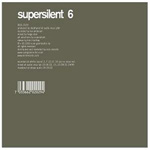 18. Supersilent
18. Supersilent
6
(2003)
Albums and tracks with no names, no rehearsal or discussion of the music out of the studio or live arena, three improvised jazz musicians joined by a dark ambient innovator. Quite how this off-the-cuff recording manages to be not just successful but eerie, catchy, revelatory and addictive is beyond me, but the fact is that the four members of Supersilent here showcase an astonishing musical understanding.
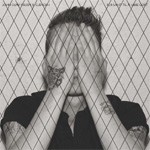 19. John Olav Nilsen & Gjengen
19. John Olav Nilsen & Gjengen
For Sant Til Å Være Godt
(2009)
Much of the praise directed at these recently emerged Bergen upstarts has focussed on the lyrical eloquence of the titular prodigious frontman, but those with no grasp of Norwegian beyond the word for apple should not be put off. Jangling guitars, charming melodies and a tight and fresh sound can all be called upon as supporting evidence by those who uphold these guys as the Norwegian Smiths. The finest Norwegian-language album of the 2000’s.
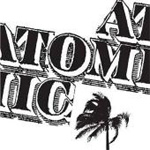 20. Atomic
20. Atomic
Bikini Tapes
(2005)
This live album showcases one of the most vivacious collectives in contemporary jazz at their most energetic; five Norwegian and Swedish virtuosos intertwining their considerable collective skills to craft fun and technically breathtaking jazz that flirts with dissension but pulls excitement, vim and cool out of the bag instead.
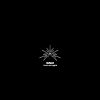 21. Deathprod
21. Deathprod
Morals and Dogma
(2004)
This eerie and intense dark ambient experience from a true sound visionary is not one that will be easily forgotten. Unnerving and evocative, Helge Sten combines gluttonous tainted noise with generator humming to ensure that you won’t want to experience whatever this is the soundtrack to.
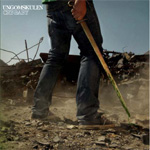 22. Ungdomskulen
22. Ungdomskulen
Cry Baby
(2008)
According to the band themselves their guitars sound like they’ve been ‘possessed by demons’, and that’s a reasonably fair assessment. Combining adolescent lyrics with epic, spiky, thrashy jamming sessions and new-rave sensibilities, Cry Baby is a great hulking punk-prog beast, and a danceable one at that. Sometimes when you haven’t played the record for a while you begin to wonder if it wasn’t all just an atonal mess, but one listen will suffice to remind just how wicked some of those riffs, and indeed some of those tunes, are. This is one demon you won’t want to exorcise.
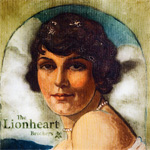 23. The Lionheart Brothers
23. The Lionheart Brothers
Dizzy Kiss
(2007)
‘A shoegazing Beach Boys’ is how the increasingly interested world music press chose to portray The Lionheart Brothers, for whom Dizzy Kiss was not their debut, even if it was received as such, and with pop harmonies this charming and guitars this psychedelically swirling who am I to argue. Dreamy melodies delivered with infectious enthusiasm make the album title entirely appropriate.
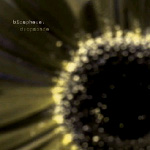 24. Biosphere
24. Biosphere
Dropsonde
(2006)
When people think of Norway snowy expanses, soaring mountains, murky fjord-waters and day-long darkness are the images most often evoked. Ambient veteran Biosphere provides the soundtracks to those bleakly beautiful solitary possibilities, with soft glacial progressions and lamenting electronic brass interacting with chattering insects, creaking ice and frost-driven wind. They may not be the only reality, but Dropsonde distils Norway’s hostile reaches, and does so with supreme splendour.

25. Tellé
En Samleplate
(2000)
This is where it all began. Many of Norway’s successes this decade came from Bergen, and most of them started out on a small label run by Mikal Telle. This was that label’s breakthrough, and also the first exposure for several names who have come to define Norway’s music scene: Annie, Ralph Myerz and the Jack Herren Band, Frost, Bjørn Torske and, of course, Röyksopp. With this release Norway took its first step towards the musical big-league.

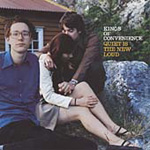
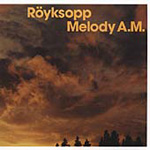
No Kaizers Orchestra? Losing credibility.